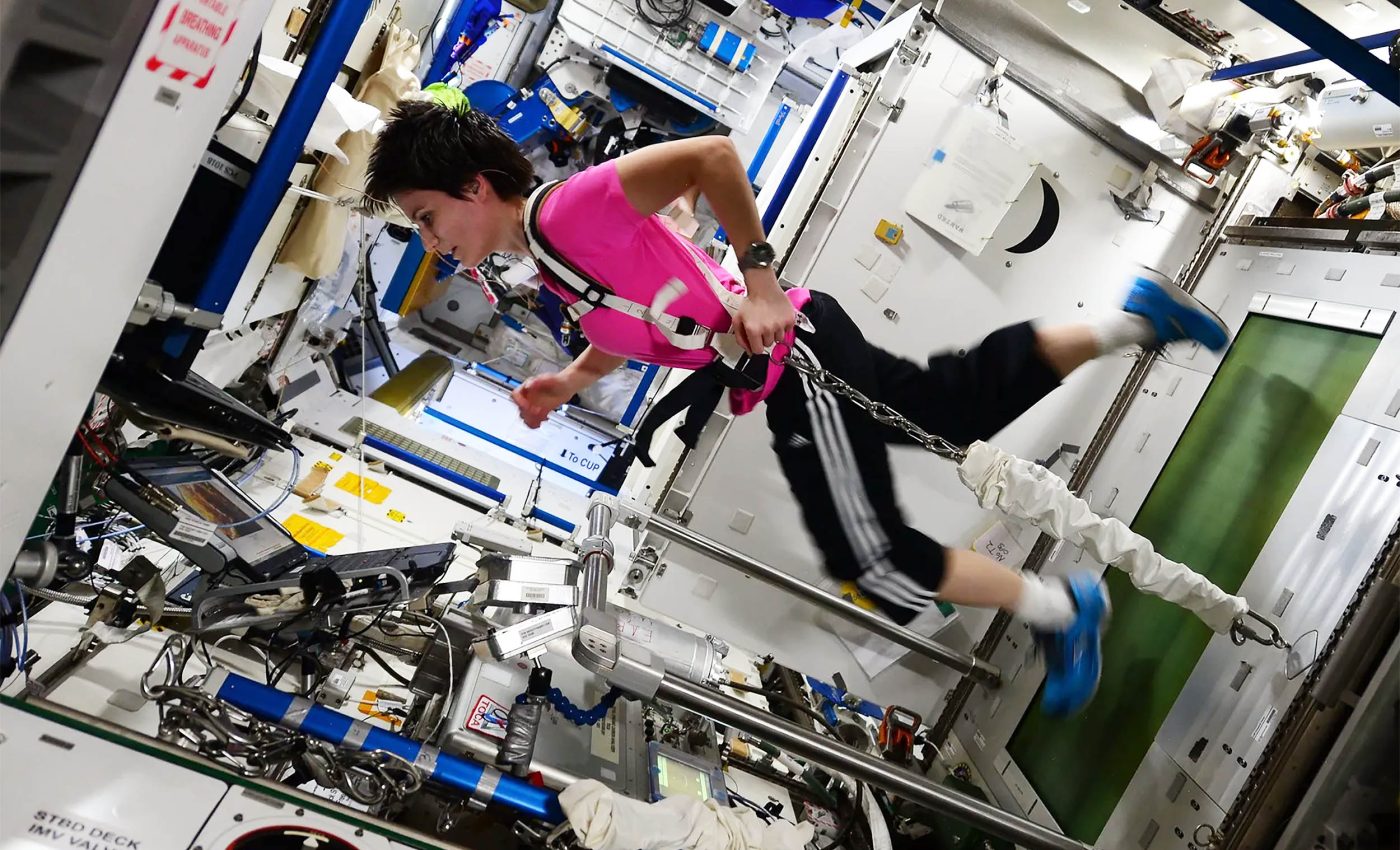
Cooling things down in space isn't as easy as it would seem
In space, water doesn’t behave the way we’re used to seeing on Earth. If you’ve ever noticed water dripping down the back of your fridge or fog forming on a cold soda can, you’ve seen condensation at work.
On Earth, gravity quickly pulls that water downward. But what happens in space, where gravity doesn’t get a say?
That’s the question scientists are finally answering aboard the International Space Station.
A new experiment is zooming in on how thin films of liquid behave on cool surfaces in microgravity. It’s not about making better soda cans in orbit – it’s about cracking the physics behind heat transfer.
This has real-world consequences for electronics, space missions, and even how we manufacture materials here on Earth.
Fin shape in space cooling systems
Electronics, engines, and even your phone generate heat that has to go somewhere. Air conditioners, radiators, and even laptop coolers use thin metal fins to draw heat away efficiently.
The design and shape of these fins play a crucial role in how effectively the cooling system can move and dissipate heat.
“We are looking for the best fin shape to maximize heat transfer,” said Brice Saint-Michel, the project scientist for this experiment.
To understand what’s really going on, the researchers sent a one-centimeter-tall aluminum fin into orbit. It’s coated in a refrigerant – a volatile fluid that condenses and evaporates with just a little heat.
As it cools, the refrigerant begins to condense into a liquid film. Then, instead of just dripping away like it would on Earth, the liquid spreads out across the fin.
Balazs Toth is a member of the Low Earth Orbit Payload Team at the European Space Agency (ESA).
“Microgravity conditions allow us to use a large fin without being disturbed by gravity drainage and vapor convection. It is then much easier to see if liquid films take a different shape,” said Toth.
What liquids do in space
Footage from the experiment – shot in greyscale and sped up five times – compares condensation on Earth to what happens in orbit.
On Earth, liquid droplets form and slide down to the bottom of the fin. But in microgravity, the liquid sticks to the entire surface of the fin instead of pooling at the bottom.
“The liquid seems to be attracted to cold surfaces as a safe place to go, unlike what happens with heat transfer on Earth,” said senior researcher Andrey Glushchuk from the Centre for Research and Engineering in Space Technologies (CREST) at the Université Libre de Bruxelles.
Without gravity, everything changes. Thermal systems built for Earth just don’t work the same way in orbit.
Engineers need new ways to handle heat in satellites, spacecraft, and even in future moon bases or Mars habitats. And the answers lie in the math.
“Any thermal system designed with ground standards won’t work in microgravity. We need to create new designs with novel concepts in mind,” said Glushchuk.
Designing a cooling system for space
The setup is surprisingly compact. It uses two tiny “fingers” on either side of the fin – made of a special nickel-iron alloy – as calibration points.
A high-precision interferometer tracks how thick the liquid film is, how the temperature changes, and how much vapor is in the air around the fin.
The liquid is constantly pulled away by a sponge-like material and pumped back through the system to keep the process going in a loop.
The researchers behind this study have run similar experiments in short bursts of weightlessness – like those found during parabolic flights. But these moments only last seconds. For reliable data, they needed the constant free-fall of orbit.
“We needed the constant microgravity conditions of the International Space Station; nowhere else could we have achieved this level of stability, accuracy and high resolution in our measurements,” said Glushchuk.
Predicting how condensation behaves
Now, the team finally has enough data to start checking those complex theoretical models scientists have built over the years.
The goal is to create a single formula that accurately predicts how condensation behaves in different conditions.
“We want a formula that applies to all, and this is the first time we have had a wealth of data to consolidate it,” said Carlo Saverio Iorio, head of CREST.

A new lab aboard the station
This experiment is just the beginning. It’s part of a larger setup called the Heat Transfer Host 2 facility.
Delivered to the ISS on September 30, 2025, during a Northrop Grumman cargo mission, this waist-high module is the latest addition to Europe’s Columbus lab on the station. It’s designed to run experiments automatically, and it’s already working perfectly.
Next up is a new experiment focusing on Marangoni effects – strange instabilities that show up in evaporating liquid films.
This project could reveal even more about how heat and fluid behave in space, which might help design better cooling systems for life support, fuel handling, or advanced manufacturing beyond Earth.
—–
Like what you read? Subscribe to our newsletter for engaging articles, exclusive content, and the latest updates.
Check us out on EarthSnap, a free app brought to you by Eric Ralls and Earth.com.
—–













